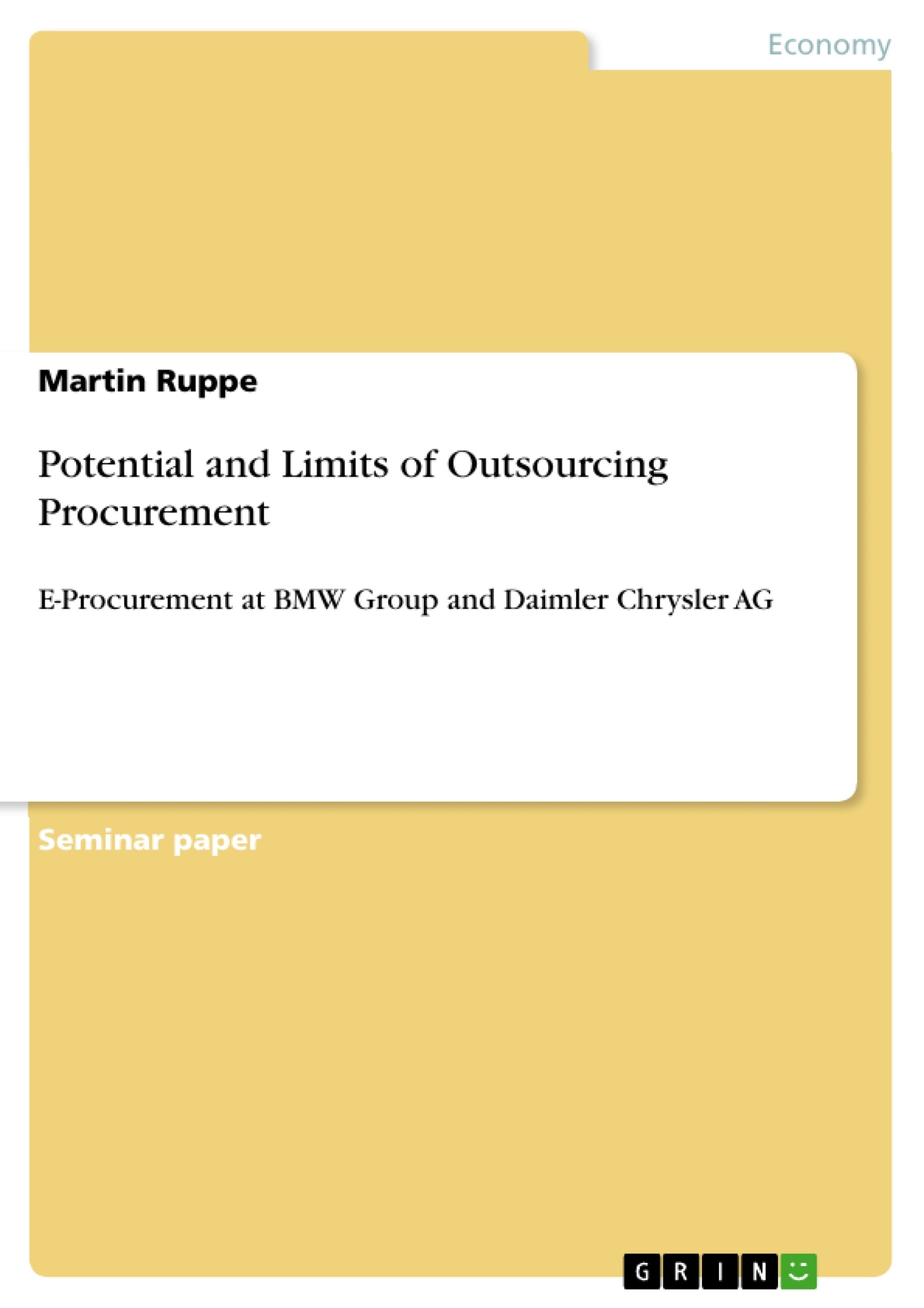The increasing complexity of the business environment and the internationalization of business activities in the past decades have led to an increase of market dynamics. For companies, it is therefore increasingly important to be flexible from the tactical and strategical point of view, to keep costs under control and to maintain or even increase their level of performance with regard to worldwide competition.
Companies have to adjust their internal organizational structure concerning cost –and efficiency aspects, also with regard to the core competences each company specializes in. The outsourcing of competences to certain suppliers and service providers is regarded as a main strategy to secure competitiveness.
Therefore, the usage of new communication -and IT-tools is getting more and more important.
This paper shows the potential and limits of outsourcing the Procurement when companies try to restructure their organization. Beside conventional possibilities of outsourcing, new electronic procurement-solutions have become more popular during the last decades. The focus of this paper lies on such new electronic procurement-solutions. Chapter 2 describes the basics of Procurement and Outsourcing. Based on this, chapter 3 shows potential and limits of both, conventional solutions of outsourcing and also new modern solutions. To get a more practical view, the paper describes the topic by means of two examples from the automobile industry by BMW Group and the DaimlerChrysler AG. Finally, the paper gives a summary and a preview regarding upcoming business challenges of outsourcing procurement.
Inhaltsverzeichnis (Table of Contents)
- Introduction
- Basics
- Basics of Procurement
- Definitions and explanations of terms
- Functions and Responsibilities
- Objectives
- Basics of Outsourcing
- Definitions and explanations of terms
- Fields of Outsourcing
- Objectives
- Basics of Procurement
- Potential and limits of Outsourcing Procurement
- Potential of Outsourcing Procurement
- Conventional Possibilities
- E-Procurement and E-Procurement Service Provider
- Outsourcing with E-Procurement using the example of BMW Group
- Limits of Outsourcing Procurement
- The problem of Know-How-loss
- Loss of Control
- Reduction of Synergy
- Limits of Outsourcing Procurement with E-Procurement using the example of DaimlerChrysler AG
- Potential of Outsourcing Procurement
- Summary and Future Prospects
Zielsetzung und Themenschwerpunkte (Objectives and Key Themes)
This term paper analyzes the potential and limitations of outsourcing procurement within a company's organizational structure. It specifically examines the role of e-procurement and E-Procurement Service Providers in this process. Key themes explored in this paper include:- The increasing importance of flexibility and cost control in a globalized market
- The strategic advantages and disadvantages of outsourcing core competences
- The impact of new communication and IT tools on procurement processes
- The practical application of e-procurement solutions in the automotive industry
- The challenges and opportunities associated with outsourcing procurement in the future
Zusammenfassung der Kapitel (Chapter Summaries)
The paper starts with an introduction that emphasizes the need for companies to adapt their organizational structures in response to global market dynamics. It highlights the role of outsourcing as a key strategy for maintaining competitiveness. Chapter 2 lays the foundation for the analysis by providing definitions and explanations of terms related to procurement and outsourcing. This includes the functions and responsibilities of the procurement department, as well as the objectives of both procurement and outsourcing. Chapter 3 delves into the potential and limitations of outsourcing procurement. It discusses both conventional outsourcing possibilities and the emergence of e-procurement solutions. This chapter also provides practical examples from the automotive industry, specifically focusing on the BMW Group and DaimlerChrysler AG. The paper concludes with a summary of the key findings and a look at future prospects for outsourcing procurement.Schlüsselwörter (Keywords)
This paper focuses on the interplay of outsourcing and procurement within the context of corporate strategy and organizational change. It explores the emergence of e-procurement solutions as a key driver for innovation and efficiency in modern procurement practices. The paper highlights the importance of understanding the potential and limits of outsourcing, drawing upon examples from the automotive industry, including the BMW Group and DaimlerChrysler AG.- Arbeit zitieren
- Martin Ruppe (Autor:in), 2014, Potential and Limits of Outsourcing Procurement, München, GRIN Verlag, https://www.grin.com/document/275426



